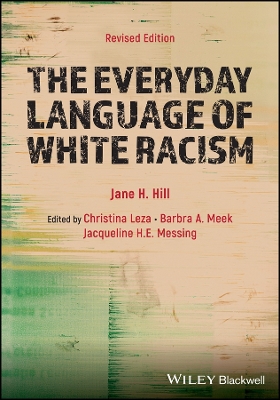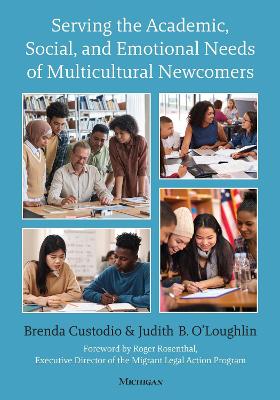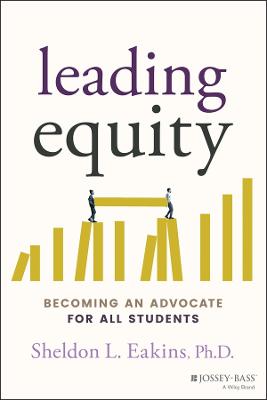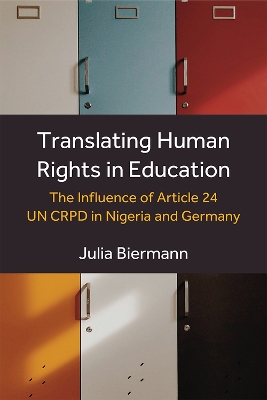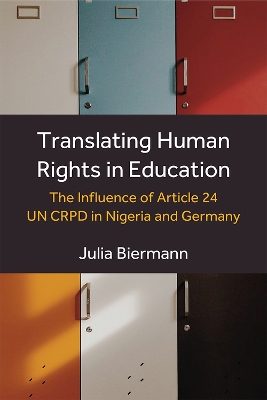Freedom Teaching
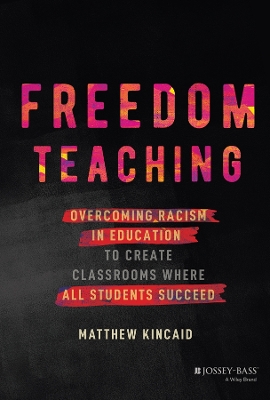 -15%
portes grátis
-15%
portes grátis
Freedom Teaching
Overcoming Racism in Education to Create Classrooms Where All Students Succeed
Kincaid, Matthew
John Wiley & Sons Inc
02/2024
192
Dura
Inglês
9781119984832
15 a 20 dias
666
Descrição não disponível.
Introduction: The Journey xi
Chapter 1: Setting Intention 1
Intention Matters 3
Agreement #1: Engage with Uncomfortable Truths 4
Agreement #2: Replace a Scarcity Mindset with a Possibility Mindset 6
Agreement #3: Embrace Your Radical Imagination 8
Agreement #4: Center Students 9
Notes 10
Chapter 2: Freedom Teaching's Foundation 11
What Is Freedom Teaching? 13
Theory of Change 16
Change the Environment, Change the Outcomes 16
Adjust the Camera Angle 19
Use the Right Tools 21
Freedom Teaching's Five Tenets and How to Use Them 24
Notes 25
Chapter 3: Hope That Is Radical 27
Rosa Parks and Radical Hope 28
Reclaiming Radical 31
Using Our Tools 34
Notes 37
Chapter 4: From Radical Hope to Practice 39
Sharing Power with Students 43
Strategies That Cede Power to Students 50
Notes 54
Chapter 5: Free Minds, Free Kids 55
The Mind Is a Terrible Thing to Waste 56
Limiting Beliefs and the Cycle of Socialization 58
Aligning Our Attitudes and Our Behaviors 64
Note 65
Chapter 6: It Isn't Rigorous, If It Isn't Relevant 67
Embracing Our Power 67
The Freedom Teaching Model 73
Cognitive Empowerment 77
Academic Achievement 82
Academic Identity 83
Academic Proficiency 84
Critical Rigor 85
Social and Emotional Well-Being 89
Cultural Competence 90
Critical Consciousness 93
Curriculum, Pedagogy, and Environment 99
Notes 102
Chapter 7: Trouble Doesn't Teach 103
Reinforcing the Behaviors We Want 106
Anecdote #1 111
Anecdote #2 113
Misbehaviors Are an Opportunity to Teach 115
Identify Traits and Skills of Empowered Students 118
Consider the Effect of Consequences 119
Align Consequences to Student Goals and Values 120
Aim for Consequences That Are Restorative, Student-Driven, and Community-Focused 121
Aim for Consequences That Are Consistent, Predictable, and Compassionate 123
Notes 125
Chapter 8: Cultivating a Classroom That Values Cultural Wealth 127
Culturally Affirming Education 129
What Is Cultural Wealth? 130
Aspirational Capital 131
Linguistic Capital 132
Familial Capital 134
Social Capital and Navigational Capital 136
Resistant Capital 139
Standpoint Theory and Cultural Wealth 141
Envisioning Equity 147
Notes 148
Chapter 9: Oh Freedom: Staying on the Battlefield 151
Freedom Song 154
On Hope 159
Notes 160
About the Author 161
Acknowledgments 163
Index 167
Chapter 1: Setting Intention 1
Intention Matters 3
Agreement #1: Engage with Uncomfortable Truths 4
Agreement #2: Replace a Scarcity Mindset with a Possibility Mindset 6
Agreement #3: Embrace Your Radical Imagination 8
Agreement #4: Center Students 9
Notes 10
Chapter 2: Freedom Teaching's Foundation 11
What Is Freedom Teaching? 13
Theory of Change 16
Change the Environment, Change the Outcomes 16
Adjust the Camera Angle 19
Use the Right Tools 21
Freedom Teaching's Five Tenets and How to Use Them 24
Notes 25
Chapter 3: Hope That Is Radical 27
Rosa Parks and Radical Hope 28
Reclaiming Radical 31
Using Our Tools 34
Notes 37
Chapter 4: From Radical Hope to Practice 39
Sharing Power with Students 43
Strategies That Cede Power to Students 50
Notes 54
Chapter 5: Free Minds, Free Kids 55
The Mind Is a Terrible Thing to Waste 56
Limiting Beliefs and the Cycle of Socialization 58
Aligning Our Attitudes and Our Behaviors 64
Note 65
Chapter 6: It Isn't Rigorous, If It Isn't Relevant 67
Embracing Our Power 67
The Freedom Teaching Model 73
Cognitive Empowerment 77
Academic Achievement 82
Academic Identity 83
Academic Proficiency 84
Critical Rigor 85
Social and Emotional Well-Being 89
Cultural Competence 90
Critical Consciousness 93
Curriculum, Pedagogy, and Environment 99
Notes 102
Chapter 7: Trouble Doesn't Teach 103
Reinforcing the Behaviors We Want 106
Anecdote #1 111
Anecdote #2 113
Misbehaviors Are an Opportunity to Teach 115
Identify Traits and Skills of Empowered Students 118
Consider the Effect of Consequences 119
Align Consequences to Student Goals and Values 120
Aim for Consequences That Are Restorative, Student-Driven, and Community-Focused 121
Aim for Consequences That Are Consistent, Predictable, and Compassionate 123
Notes 125
Chapter 8: Cultivating a Classroom That Values Cultural Wealth 127
Culturally Affirming Education 129
What Is Cultural Wealth? 130
Aspirational Capital 131
Linguistic Capital 132
Familial Capital 134
Social Capital and Navigational Capital 136
Resistant Capital 139
Standpoint Theory and Cultural Wealth 141
Envisioning Equity 147
Notes 148
Chapter 9: Oh Freedom: Staying on the Battlefield 151
Freedom Song 154
On Hope 159
Notes 160
About the Author 161
Acknowledgments 163
Index 167
Este título pertence ao(s) assunto(s) indicados(s). Para ver outros títulos clique no assunto desejado.
What inclusive instructors do; multicultural education; anti bias; anti bias books; antiracist; antiracist books; antiracist education; antiracism; antiracism books; antiracism education; racism in education; inclusive education; urban education;
Introduction: The Journey xi
Chapter 1: Setting Intention 1
Intention Matters 3
Agreement #1: Engage with Uncomfortable Truths 4
Agreement #2: Replace a Scarcity Mindset with a Possibility Mindset 6
Agreement #3: Embrace Your Radical Imagination 8
Agreement #4: Center Students 9
Notes 10
Chapter 2: Freedom Teaching's Foundation 11
What Is Freedom Teaching? 13
Theory of Change 16
Change the Environment, Change the Outcomes 16
Adjust the Camera Angle 19
Use the Right Tools 21
Freedom Teaching's Five Tenets and How to Use Them 24
Notes 25
Chapter 3: Hope That Is Radical 27
Rosa Parks and Radical Hope 28
Reclaiming Radical 31
Using Our Tools 34
Notes 37
Chapter 4: From Radical Hope to Practice 39
Sharing Power with Students 43
Strategies That Cede Power to Students 50
Notes 54
Chapter 5: Free Minds, Free Kids 55
The Mind Is a Terrible Thing to Waste 56
Limiting Beliefs and the Cycle of Socialization 58
Aligning Our Attitudes and Our Behaviors 64
Note 65
Chapter 6: It Isn't Rigorous, If It Isn't Relevant 67
Embracing Our Power 67
The Freedom Teaching Model 73
Cognitive Empowerment 77
Academic Achievement 82
Academic Identity 83
Academic Proficiency 84
Critical Rigor 85
Social and Emotional Well-Being 89
Cultural Competence 90
Critical Consciousness 93
Curriculum, Pedagogy, and Environment 99
Notes 102
Chapter 7: Trouble Doesn't Teach 103
Reinforcing the Behaviors We Want 106
Anecdote #1 111
Anecdote #2 113
Misbehaviors Are an Opportunity to Teach 115
Identify Traits and Skills of Empowered Students 118
Consider the Effect of Consequences 119
Align Consequences to Student Goals and Values 120
Aim for Consequences That Are Restorative, Student-Driven, and Community-Focused 121
Aim for Consequences That Are Consistent, Predictable, and Compassionate 123
Notes 125
Chapter 8: Cultivating a Classroom That Values Cultural Wealth 127
Culturally Affirming Education 129
What Is Cultural Wealth? 130
Aspirational Capital 131
Linguistic Capital 132
Familial Capital 134
Social Capital and Navigational Capital 136
Resistant Capital 139
Standpoint Theory and Cultural Wealth 141
Envisioning Equity 147
Notes 148
Chapter 9: Oh Freedom: Staying on the Battlefield 151
Freedom Song 154
On Hope 159
Notes 160
About the Author 161
Acknowledgments 163
Index 167
Chapter 1: Setting Intention 1
Intention Matters 3
Agreement #1: Engage with Uncomfortable Truths 4
Agreement #2: Replace a Scarcity Mindset with a Possibility Mindset 6
Agreement #3: Embrace Your Radical Imagination 8
Agreement #4: Center Students 9
Notes 10
Chapter 2: Freedom Teaching's Foundation 11
What Is Freedom Teaching? 13
Theory of Change 16
Change the Environment, Change the Outcomes 16
Adjust the Camera Angle 19
Use the Right Tools 21
Freedom Teaching's Five Tenets and How to Use Them 24
Notes 25
Chapter 3: Hope That Is Radical 27
Rosa Parks and Radical Hope 28
Reclaiming Radical 31
Using Our Tools 34
Notes 37
Chapter 4: From Radical Hope to Practice 39
Sharing Power with Students 43
Strategies That Cede Power to Students 50
Notes 54
Chapter 5: Free Minds, Free Kids 55
The Mind Is a Terrible Thing to Waste 56
Limiting Beliefs and the Cycle of Socialization 58
Aligning Our Attitudes and Our Behaviors 64
Note 65
Chapter 6: It Isn't Rigorous, If It Isn't Relevant 67
Embracing Our Power 67
The Freedom Teaching Model 73
Cognitive Empowerment 77
Academic Achievement 82
Academic Identity 83
Academic Proficiency 84
Critical Rigor 85
Social and Emotional Well-Being 89
Cultural Competence 90
Critical Consciousness 93
Curriculum, Pedagogy, and Environment 99
Notes 102
Chapter 7: Trouble Doesn't Teach 103
Reinforcing the Behaviors We Want 106
Anecdote #1 111
Anecdote #2 113
Misbehaviors Are an Opportunity to Teach 115
Identify Traits and Skills of Empowered Students 118
Consider the Effect of Consequences 119
Align Consequences to Student Goals and Values 120
Aim for Consequences That Are Restorative, Student-Driven, and Community-Focused 121
Aim for Consequences That Are Consistent, Predictable, and Compassionate 123
Notes 125
Chapter 8: Cultivating a Classroom That Values Cultural Wealth 127
Culturally Affirming Education 129
What Is Cultural Wealth? 130
Aspirational Capital 131
Linguistic Capital 132
Familial Capital 134
Social Capital and Navigational Capital 136
Resistant Capital 139
Standpoint Theory and Cultural Wealth 141
Envisioning Equity 147
Notes 148
Chapter 9: Oh Freedom: Staying on the Battlefield 151
Freedom Song 154
On Hope 159
Notes 160
About the Author 161
Acknowledgments 163
Index 167
Este título pertence ao(s) assunto(s) indicados(s). Para ver outros títulos clique no assunto desejado.

